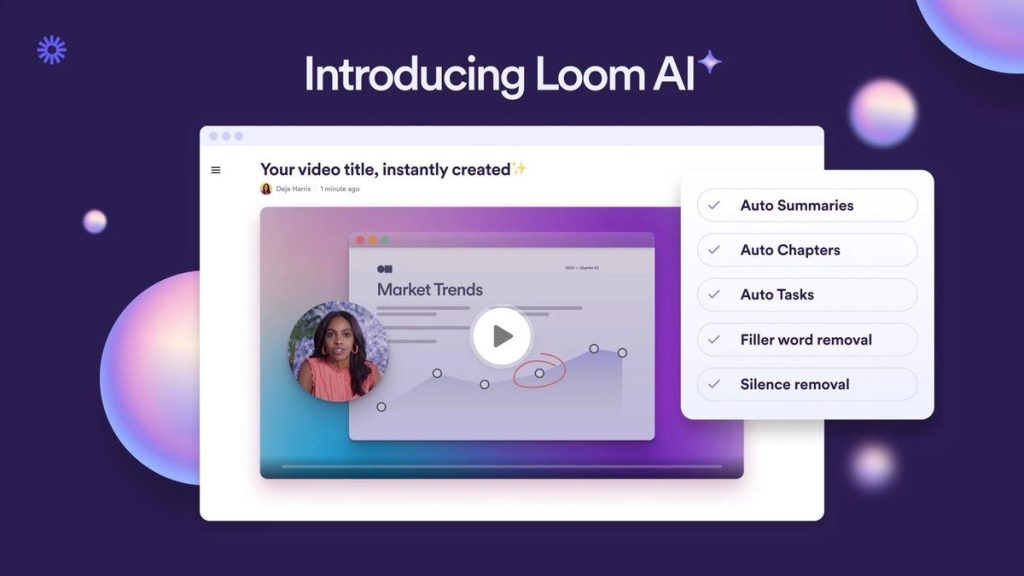Video messaging platform Loom unveiled several generative-AI focused upgrades this week, as it aims to stay ahead of the competition in the red-hot asynchronous communication space.
The San Francisco-based startup launched a suite of new features, including automated video summaries, titles, chapters and tasks, powered by generative AI. The company said the new features boosted viewer engagement on Looms by 18%, with 73% of users saying they were “extremely or very valuable” to their workflows.
The platform is also integrating with Google Workspace, which will turn Loom links into smart previews across Google Docs and Chat, showing relevant information like titles and summaries. Loom expanded instant video captions to over 50 languages, in an effort to cater to its growing international audience, also revamping its desktop app for more polished recording.
Beyond these features, Loom is also deploying AI that can remove filler words and silence in videos. This allows for a more concise, polished viewing experience.
The offerings are strategically targeted to help the category pioneer maintain its lead as it faces more competition from budding asynchronous communication and AI tools, both from startups and established players. Founded in 2015, Loom says it currently has over 21 million users from over 350,000 companies globally.
Zoom launched its own asynchronous video tool just a few weeks ago, offering similar functionality to Loom. This is while Vidyard, Clipchamp and Wistia have scaled quickly with similar enterprise video tools. Vidyard recently said it is aiming to hit $100 million in revenue. Clipchamp was acquired by Microsoft in 2021, with the technology now being integrated into the Windows 11 OS.
Similarly, AI transcription tools, like Otter, Whisper and Kensho, also offer generative-AI summary features within their platforms.
Loom and competitors offer enterprises powerful tools to message at scale while maintaining the personal connection of video. With remote work enduring, employees and teams are finding that asynchronous mediums often enable more flexible, efficient collaboration than live meetings, which can often be unproductive. In a 2018 column, The Economist coined “Bartleby’s Law,” the idea that meetings waste 80% of the time of 80% of the people in attendance.
Sales people use async platforms to make pitches more personal, or managers may find it more productive to review an employees’ work via an async screen share.
Loom is quickly growing its customer base among startups and established tech giants, touting Tesla, Disney, Ford, Walmart, and Amazon, as customers. The company has raised $203.6M to date, according to Crunchbase, with backing from Andreessen Horowitz, Kleiner Perkins and Sequoia Capital.
“This technological boom in generative AI is a bit like a destiny moment for the Loom format. It will help us make video so useful at work that more and more people want to communicate and get work done with it. It’s kind of wild,” said Loom CTO Vinay Hiremath.
Read the full article here










